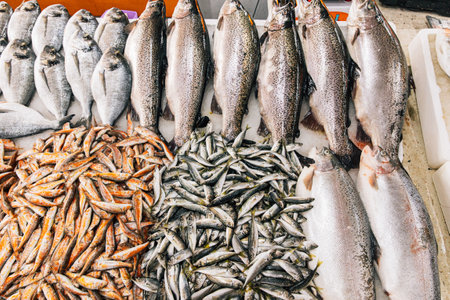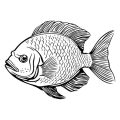1. Understanding Bream and Tench Habits
Before selecting the right rods, reels, and lines for bream and tench, it’s essential to understand the habits of these two classic coarse fish species common in British waters. Both bream and tench are known for their cautious feeding behaviour, often moving slowly along silty or weedy lake beds in search of natural food such as bloodworm, small snails, and other invertebrates. Their preference for quiet margins, shallow bays with plenty of cover, or deeper areas during summer days means that tackle needs to be subtle yet effective for both close-range and distance work.
Seasonal patterns also play a big part in their activity. In spring and early summer, both species become more active as water temperatures rise, often congregating in shallower areas to spawn. During this period, they are more likely to feed confidently, giving you a better chance of success with slightly heavier tackle. As the season progresses into late summer and autumn, bream tend to shoal up in deeper sections of lakes or rivers while tench may remain close to weedy edges at dawn or dusk. Winter presents a greater challenge as both species slow down considerably, requiring lighter lines and more sensitive setups to tempt bites.
By closely observing these habits—such as their tendency to feed over groundbaited areas or patrol marginal shelves—you’ll be able to make informed decisions about your tackle selection. Matching your approach to the specific feeding times and preferred habitats of bream and tench will greatly improve your chances on the bank, ensuring that your rods, reels, and lines are perfectly suited to the task at hand.
2. Selecting the Right Coarse Rods
Choosing the ideal coarse rod is fundamental for success when targeting bream and tench in British waters. Both species require a tailored approach, as the right rod can make all the difference in both casting accuracy and playing fish efficiently. Let’s break down the key features of rods—length, action, and test curve—to help you match your tackle to different swims and target sizes.
Rod Length: Matching Waters and Tactics
The length of your rod impacts casting range, control, and presentation. For most bream and tench fishing scenarios across the UK, rods typically range from 10ft to 13ft. Here’s how to choose:
| Rod Length | Best For | Benefits |
|---|---|---|
| 10ft-11ft | Small lakes, tight swims, margin fishing | Easy manoeuvrability, precise placement |
| 12ft | All-rounder for most venues | Balance of casting distance and control |
| 13ft+ | Large reservoirs, long-range work | Improved casting distance and line control over weed or lilies |
Rod Action: Fast, Medium or Through?
The action of your rod refers to where it bends under pressure. This affects how you feel bites and play fish:
- Through Action (Parabolic): Bends throughout its length, offering cushioning when playing big tench or lively bream—ideal for lighter lines and delicate presentations.
- Medium/Fast Action: Bends more in the tip section, giving better casting accuracy and stronger hook sets. Good for legering at range or when using heavier feeders.
Test Curve: Suiting Fish Size and Swim Conditions
The test curve indicates the rod’s power—how much weight it takes to bend the tip to 90 degrees. Choosing the right one ensures you can handle both shy biters and specimen fish without risking breakages.
| Test Curve (lbs) | Ideal For | Main Advantages |
|---|---|---|
| 1.0 – 1.25lb | Bream/tench up to 4lb in clear or open swims | Sensitivity for bite detection, finesse with light lines |
| 1.5lb – 1.75lb | Larger tench/bream or snaggy/weedy swims | Extra backbone for controlling bigger fish and extracting them from cover |
| 2.0lb+ | Specimen hunting or heavy feeders on large venues | Casting power and authority over really big fish or challenging conditions |
Tactical Tips for British Anglers:
- If you’re fishing classic estate lakes with lots of reeds or pads, favour a longer rod with a bit more backbone.
- For calm canals or intimate club ponds, a shorter through-action rod maximises enjoyment and bite sensitivity.
- Avoid going too heavy; bream especially respond best to subtle gear that won’t spook wary shoals.
Summary:
Selecting the right rod is about balancing swim conditions, expected fish size, and presentation style. Always adapt your choice to venue features—whether you’re working tight margins for early morning tench on a southern gravel pit or casting at distance for slabby bream on a Fenland mere.
![]()
3. Choosing Reels: Match vs Feeder
When it comes to selecting the right reel for targeting bream and tench in UK waters, most coarse anglers will find themselves choosing between match reels and feeder reels. Understanding the strengths of each can help you tailor your tackle to both traditional and modern angling methods.
Match Reels: Precision and Control
Match reels are a staple among UK anglers, especially on stillwaters and slow-flowing rivers where accurate casting and fine presentation are key. Their lightweight design, shallow spools, and high gear ratios make them ideal for float fishing – a classic technique for bream and tench. The smooth drag systems allow you to use lighter lines with confidence, making them perfect for targeting wary fish in clear water or during challenging conditions.
Advantages of Match Reels
- Excellent line lay for smooth casting with light floats
- Quick retrieve rates help when reeling in from distance
- Subtle control for working delicate rigs
Recommended Setup
Pair a 3000–4000 size match reel with a balanced float rod rated up to 6lb mainline. Use quality mono or copolymer line around 3–5lb breaking strain for stealthy presentations.
Feeder Reels: Power and Versatility
For anglers who prefer groundbait feeder or method feeder approaches, especially on commercials or larger natural venues, feeder reels offer more robust construction and deeper spools. They are designed to handle heavier lines (6–10lb) and repeated casting of loaded feeders without compromising performance. Modern feeder reels often feature larger handles and stronger drags, ideal for controlling big tench or hauling chunky bream out of weed beds.
Advantages of Feeder Reels
- Strong gearing to cope with heavy feeders and long casts
- Larger line capacity for tackling bigger venues
- Reliable drag systems for playing powerful fish
Recommended Setup
A 4000–5000 size feeder reel matches well with a 10–12ft quiver tip rod rated up to 8lb or more. Opt for robust mono or braid (6–8lb+) depending on the venue and size of fish expected.
Traditional vs Modern Approaches
While many traditionalists still favour match reels for their finesse and sensitivity, the rise of commercial fisheries has seen feeder reels become increasingly popular due to their sheer versatility. For those who enjoy switching between float and feeder tactics, consider investing in an all-rounder reel with interchangeable spools to cover both styles efficiently.
4. Line Options and Local Preferences
When it comes to selecting the right fishing line for bream and tench in UK waters, anglers have a variety of choices, each with its own set of advantages. Understanding the different mainline materials, their breaking strains, and popular rigging techniques can make all the difference between a productive session and a disappointing one.
Mainline Materials: Mono vs Braid vs Fluorocarbon
UK coarse anglers typically favour three main types of line: monofilament (mono), braided line (braid), and fluorocarbon. Each material is suited to specific situations:
| Material | Key Characteristics | Best Use |
|---|---|---|
| Monofilament | Stretch, suppleness, low visibility, affordable | General ledgering, float fishing |
| Braid | No stretch, high strength-to-diameter ratio, visible in clear water | Heavy weed or snags, long-range feeder work (with fluorocarbon leader) |
| Fluorocarbon | Low visibility, abrasion resistance, stiffness | Hooklengths/leaders, clear water conditions |
Choosing the Right Breaking Strain
The breaking strain of your mainline depends on target species, venue type, and tactics. For bream and tench in typical UK stillwaters or slow-moving rivers:
- Bream: 4–6lb (1.8–2.7kg) mono is standard; step up to 8lb (3.6kg) in snaggy venues.
- Tench: 5–8lb (2.2–3.6kg) mono is popular due to their hard-fighting nature and tendency to head for cover.
- Braid: 10–12lb (4.5–5.4kg) braid with a fluorocarbon leader offers strength without excessive diameter.
Rigging Techniques Favoured by UK Anglers
To maximise success and minimise lost fish, local anglers employ several tried-and-tested rigging techniques:
- Sinking Mainlines: Slightly heavier mono or pre-treated lines help pin the line to the lakebed, reducing spooking wary fish like big bream.
- Camo Leaders: Using fluorocarbon or coloured mono for hooklengths/leaders helps reduce visibility in clear water.
- Shockleaders: On venues with long casts or weedy margins, a shockleader of higher breaking strain protects against crack-offs and abrasion.
- Knotless Knots & Loop-to-Loop: Simple yet effective rig connections maintain strength while keeping rigs tidy and streamlined.
Avoiding Line Visibility and Abrasion: Practical Tips
- Muddy or Coloured Water: Standard green or brown monos are usually sufficient.
- Clear Water Venues: Opt for low-diameter fluorocarbon leaders and keep mainline pinned down with backleads or sinking treatments.
- Abrasion Zones: Always check for nicks after every fish; re-tie hooklengths regularly if fishing over gravel bars or near snags.
- Linelays: Fish slack lines when possible to avoid spooking feeding tench or bream.
Summary Table: Recommended Line Setups for UK Bream & Tench Fishing
| Species/Condition | Mainline Type & Strength | Leader/Hooklength Choice |
|---|---|---|
| Bream (Stillwater) | 4–6lb Mono/Braid Equivalent | 4–6lb Fluorocarbon/Mono Hooklengths |
| Tench (Weedy Margins) | 6–8lb Mono or 10lb Braid + Shockleader | 6–8lb Fluorocarbon Hooklengths |
| Bream/Tench (Clear Water) | Sinking 5–6lb Mono | Camo Fluorocarbon Leader 18”+ |
| Bream/Tench (Snaggy) | Braid Mainline + Heavy Mono Shockleader | Abrasion-resistant Mono/Fluoro Hooklengths |
This attention to line choice and rigging ensures you’re well-prepared for any situation you may encounter on British waters targeting bream and tench.
5. Practical Tackle Setups for British Venues
When fishing for bream and tench in the UK, tailoring your tackle setup to the specific water you’re targeting is essential for success. Here’s a breakdown of practical, ready-to-go combinations perfectly suited to the most common British coarse fishing venues—gravel pits, canals, and estate lakes.
Gravel Pits
Rod
A 12ft medium action feeder rod rated for 1-2oz feeders offers the ideal balance of casting distance and sensitivity. This length helps you reach deeper spots where bream and tench often feed.
Reel
Opt for a 4000-size fixed spool reel with a smooth drag system. A freespool (baitrunner) function can be a real advantage for wary fish that may pick up baits cautiously.
Mainline
6-8lb monofilament or a 0.18mm sinking braid gives good abrasion resistance against gravelly bottoms and snags, while maintaining sufficient finesse for subtle bites.
Tip:
Use a helicopter rig with a short hooklength to minimise tangles during long casts.
Canals
Rod
An 11ft light feeder or float rod works well on narrow stretches, providing accurate bait placement and subtle presentation—key factors when targeting pressured canal fish.
Reel
A 2500-size fixed spool reel matched with a reliable clutch ensures smooth line flow when playing strong tench that dart into marginal weedbeds.
Mainline
Choose 4-6lb monofilament for fine presentation but enough strength to handle occasional larger specimens and canal debris.
Tip:
A simple waggler float setup or small open-end feeder keeps your bait in the feeding zone without spooking fish in shallow, clear water.
Estate Lakes
Rod
A versatile 10-11ft rod covers both float and light feeder tactics, perfect for intimate waters where stealth is crucial for shy bream and tench.
Reel
A compact 3000-size reel balances well with shorter rods, offering precise control when casting close to lily pads or reed beds.
Mainline
Stick with 5-6lb mono or a thin diameter braid if weed is abundant, allowing you to maintain direct contact with your quarry.
Tip:
Pins-on wagglers or method feeders fished tight to marginal features often outscore other tactics on these classic British waters.
Selecting the right tackle combination based on venue type not only increases your chances of landing more bream and tench but also makes your angling experience smoother and more enjoyable. Adapt these setups as needed, keeping local conditions and fish behaviour in mind for every session.
6. Essential Accessories and Bank-Side Tips
Must-Have Accessories for UK Coarse Anglers
When targeting bream and tench, your tackle setup isn’t complete without a few key accessories that make your bank-side experience smoother, safer, and more effective. In the UK, certain items have become standard issue for responsible anglers, both for practical reasons and to ensure the welfare of the fish.
Bank Sticks and Rod Rests
Bank sticks are a staple on British waters. They allow you to securely position your rods at the perfect angle, keeping your line out of weed and providing stability when you get a bite. Adjustable aluminium or stainless steel sticks are popular due to their durability and adaptability to uneven terrain. Pair them with reliable rod rests or buzz bars for a tidy, organised swim.
Keepnets and Fish Care Essentials
A good-quality keepnet is essential if you plan to retain your catch before weighing or photographing—especially in matches or specimen hunting sessions. Ensure your net is at least 2 metres long and made from fish-friendly mesh to protect delicate scales and slime coats. For unhooking, always use a padded unhooking mat; it’s not only best practice but required on many UK fisheries. This protects bream and tench from injury while they’re handled on the bank.
Landing Nets
A large, soft-mesh landing net is crucial for safely landing bigger specimens of both species. Opt for a triangular or spoon-shaped net with a deep mesh pocket—ideally 22–30 inches across—to comfortably accommodate chunky tench or slabs of bream.
Tackle Organisation and Local Considerations
Use a sturdy seat box or carryall to keep all your bits, rigs, bait, and spare gear in order. Many British anglers swear by modular systems that allow easy access whether you’re on a club water or a wild fen drain. Remember to pack lightweight waterproofs and wellies—UK weather can change quickly!
Practical Tips for Responsible Angling
Always wet your hands before handling fish, especially bream with their delicate slime coating. Keep sessions tidy by using bait tubs and rubbish bags, leaving no trace behind. Be mindful of local byelaws regarding keepnet use and always check fishery rules before setting up—some waters require barbless hooks or prohibit retaining fish altogether.
With these essential accessories and bank-side tips tailored to UK conditions, you’ll be well-prepared for successful—and responsible—coarse fishing sessions targeting bream and tench.


